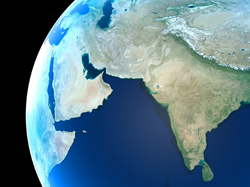GEO technology initiative goes to central Asia
The Global Earth Observation System of Systems (GEOSS) project found that Central Asia is ideally suited for the uptake of Earth Observation (EO) technologies. It therefore established as its primary goal a platform solution for the region's developmental challenges. Some of the goals attained were a mapping of the regional needs, establishing a regional network that will help disseminate GEOSS technologies in the region and pilot a training programme for stakeholders. With these initiatives in place, the 'GEO capacity building initiative in Central Asia' (SEOCA) project increased regional governments acceptance of GEOSS technologies for national environmental services, which include meteorology, geological exploration and natural hazard prevention. It is important to note that SEOCA is a Supporting Action. It was never intended to benefit from its activities in the form of scientific results but rather aimed exclusively at building international cooperation in the EO technology domain. Additionally it can also be recognised for its efforts in spreading affordable EO technologies and encouraging regional development through its capacity building activities. It has also significantly advanced the goals of the 'Seville Roadmap', a document outlining the importance of attaining resource mobilisation. The significance of this is that the roadmap attempted to provide authorities with the necessary information to best protect society against natural or human-induced disasters and manage energy resources and best responses to climatic changes. In order to do so, on a global scale, this Supportive Action now closes a gap in GEO technology observation networks for the central Asian region.



